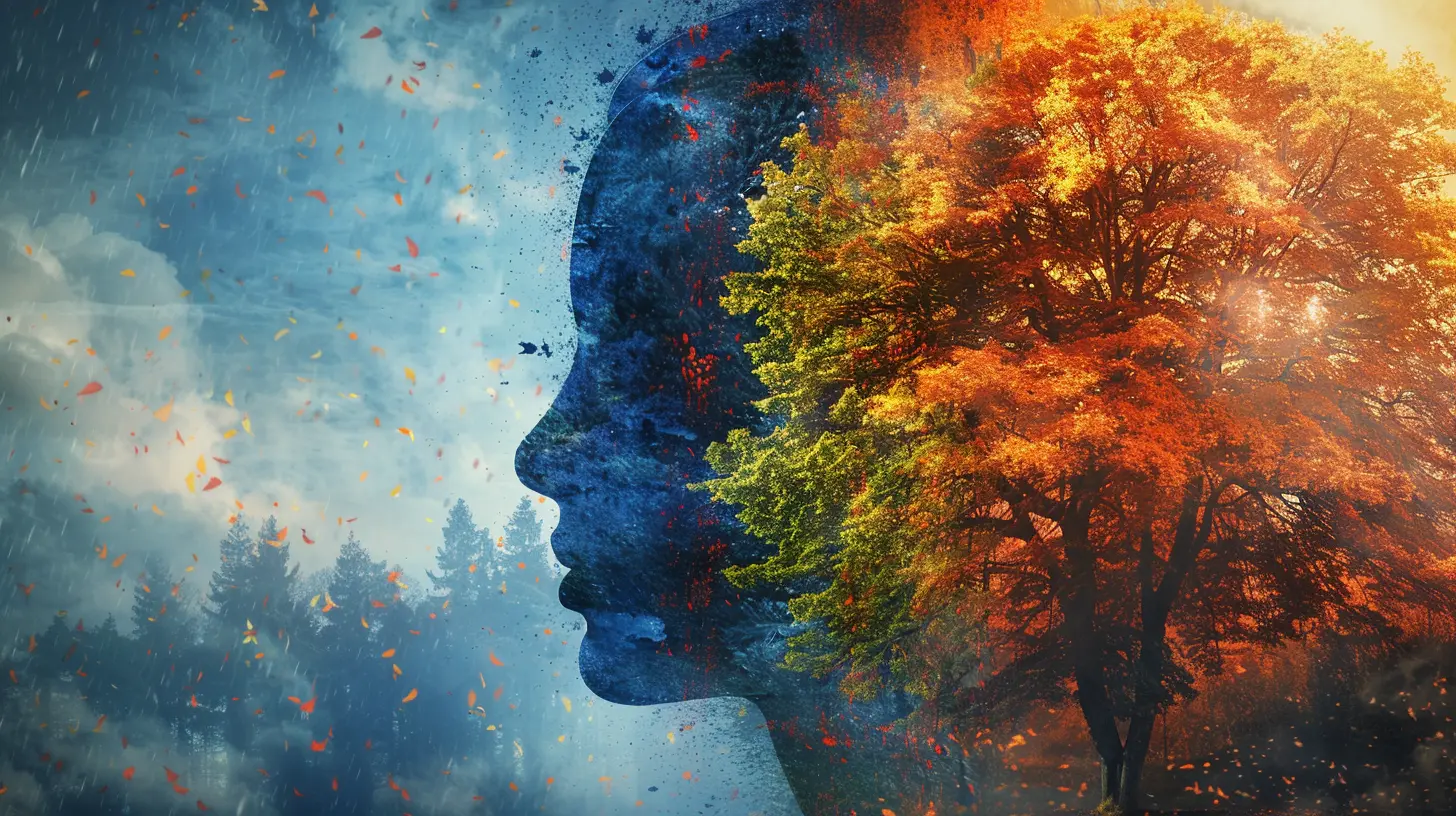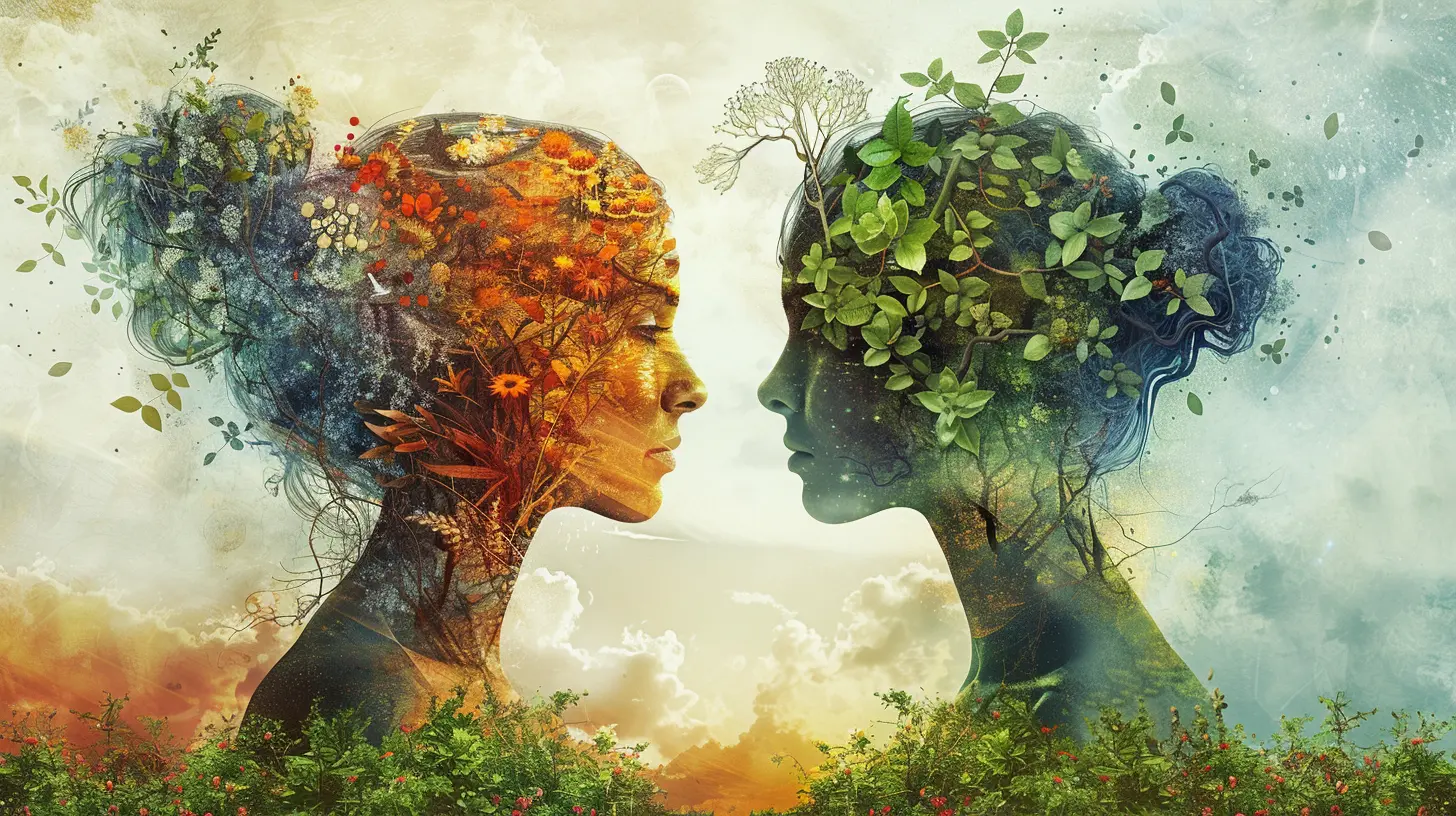The Healing Power of Ecotherapy: Connecting with Nature for Mental Health
7 November 2025
Ever feel like hitting the pause button on life and running off to the woods? You’re not alone. In our fast-paced, screen-saturated world, more and more people are discovering something powerful: nature heals. Not in a vague, poetic kind of way—but in a real, scientifically-backed, soul-nourishing way. It’s called ecotherapy, and trust me, it’s not just about hugging trees.
In this post, we’re going to unpack what ecotherapy really is, how it can boost your mental health, and why stepping outside just might be the most underrated form of therapy around. So grab a cup of tea (or better yet, take this read outdoors), because we’re diving deep into the healing power of ecotherapy.
What Is Ecotherapy Anyway?
Let’s strip it down to basics. Ecotherapy—also known as nature therapy or green therapy—is a form of therapeutic treatment that involves doing structured activities in nature. Think gardening, walking in a forest, caring for animals, or even meditating by a river.The idea is simple: reconnecting with the natural world helps improve mental and emotional well-being. While the roots of ecotherapy go way back (think indigenous traditions and ancient practices), it’s now gaining traction in modern psychology as a legit complement to conventional treatments like talk therapy or medication.
And here’s the kicker—scientific research is starting to catch up, showing that nature can actually rewire our stressed-out brains.
Why Nature? What’s So Special About Trees and Dirt?
So what is it about nature that calms our nerves and lifts our spirits?1. It Lowers Stress Hormones
Studies show that spending just 20 minutes in a green space can lower cortisol levels—the hormone responsible for stress. That’s faster than most prescription meds can work. Ever notice how even a short walk through a park can leave you feeling calmer? That’s not a coincidence—it’s biology.2. Nature Engages Our Senses
In a world where we’re glued to screens, we’ve become sensory-starved. Nature wakes up your senses. The sound of birds, the smell of rain-soaked earth, the feel of grass under your feet—it all grounds you in the present moment and gives your brain a much-needed break.3. It Shifts Perspective
When you’re surrounded by towering trees or standing on a mountaintop, suddenly your problems don’t seem so big. Nature has a way of humbling us in the gentlest possible way. It reminds us that we’re part of something much larger than our anxiety or to-do list.
Different Types of Ecotherapy
Now that we know how powerful nature can be, let’s talk about all the ways we can tap into it. Ecotherapy isn’t a one-size-fits-all—there’s a flavor for everyone.1. Green Exercise
This one’s a win-win: physical movement in nature. Jogging in a park, hiking, cycling through a forest trail—it boosts both endorphins and connection to the natural world.2. Horticultural Therapy
Yes, gardening counts as therapy. Digging your hands into soil, growing something from seed to blossom—it’s ridiculously satisfying and therapeutic. Some therapists even use gardening as a structured part of mental health treatment.3. Animal-Assisted Therapy
Working with animals in a natural setting, like on a farm or a sanctuary, can be incredibly healing. Animals are intuitive, non-judgmental, and help people feel loved and needed.4. Wilderness Therapy
This is often used for teens and young adults struggling with serious emotional or behavioral issues. It involves extended stays in nature with therapeutic guidance—a bit like boot camp meets soul-searching.5. Mindfulness in Nature
Practicing mindfulness or meditation outdoors amplifies the benefits. Being fully present in a forest, beach, or meadow helps center your thoughts and calm your nervous system more deeply than an indoor session might.
How Ecotherapy Helps With Mental Health
Let’s drill down into the specific mental health issues ecotherapy can help with. (Spoiler: it’s a long list.)1. Anxiety and Depression
Nature reduces rumination—that endless loop of negative thinking common in anxiety and depression. When you're focusing on the sound of rustling leaves or the rhythm of your breath as you walk, your mind shifts out of that loop. You're not curing depression with a walk in the woods, but you're making space for healing to begin.2. PTSD and Trauma Recovery
Nature is non-threatening. It doesn’t talk back or judge. That safe, peaceful environment can be incredibly beneficial for people healing from trauma. Ecotherapy allows gentle exposure to calming stimuli, helping nervous systems that are always on red alert to reset.3. ADHD and Focus Issues
Studies show kids with ADHD often function better after spending time in green spaces. The unstructured, sensory-rich environment helps improve focus and reduce impulsivity. And let’s be honest—don’t we all have a little attention deficit these days?4. Stress and Burnout
Anyone juggling work, parenting, or just life in general knows how burnout feels. Nature offers the ultimate reset. The Japanese even have a name for it—“forest bathing” (or Shinrin-yoku). No exercise or agenda—just being present in the forest. It’s like a spa day for your mind.Ecotherapy in Urban Settings: Can You Still Do It?
You might be thinking, "But I live in a city—how am I supposed to get my nature fix?" Good news: ecotherapy is totally possible in urban environments.Try these:
- Visit your local park regularly. Even a 15-minute walk helps.
- Tend to houseplants or start a small herb garden on your windowsill.
- Bring nature indoors—nature sounds, essential oils, or even photos of landscapes can have a surprisingly calming effect.
- Join a community garden or clean-up crew for a local green space—connection plus nature? Double win.
How to Get Started With Ecotherapy
You don’t need to book a retreat or find a therapist to start benefiting from ecotherapy. Here’s how you can dip your toes in (sometimes literally).1. Go for Nature Walks Regularly
Start small. Ten minutes a day. Leave the phone at home or on silent. Focus on what you see, hear, and feel. That’s it.2. Practice Grounding Techniques
Take your shoes off and walk barefoot in the grass (weather permitting!). Lie under a tree and watch the leaves sway. Use nature to ground your senses and your thoughts.3. Journal Outdoors
Bring your notebook to a quiet outdoor spot and let your thoughts flow. Being in nature often helps emotions come up more easily and clearly.4. Try a Digital Detox Weekend
Step away from tech and spend the weekend in nature—a hike, a beach day, camping, or even just hanging out in your backyard. See how your mind and mood respond.When to See a Professional
While DIY ecotherapy is awesome, let’s be clear—it’s not a replacement for professional mental health care. If you’re dealing with severe depression, chronic anxiety, or trauma, seek help from a licensed therapist. The good news? Many therapists are now integrating ecotherapy into traditional sessions.Some even specialize in nature-based treatments. You sit and talk... under a tree.
The Soul-Deep Magic of Being in Nature
Let’s be real for a sec.Have you ever stood at the edge of an ocean and felt your worries melt into the waves? Or sat quietly under a tree and felt something inside you finally—finally—let go?
That’s ecotherapy. It’s the healing you didn’t know you needed. It’s about remembering that you’re part of the natural world, not separate from it. And in reconnecting with nature, you reconnect with yourself.
Final Thoughts
Ecotherapy isn’t a magic bullet. It won’t fix everything. But it offers something that’s become painfully rare in our modern lives—stillness, presence, connection.Most of us are running on empty. Burned out, anxious, over-stimulated. And nature is sitting there, quiet and patient, waiting for us to come home.
So maybe the next time life feels too much, you’ll put on your shoes, walk to the nearest patch of green, and just… be. No agenda. Just you and the earth beneath your feet.
Who knows? You might find more healing in that moment than you ever expected.
all images in this post were generated using AI tools
Category:
Therapy TechniquesAuthor:

Janet Conrad
Discussion
rate this article
1 comments
Mabel Velez
Oh sure, just a casual stroll in the woods and all my problems will magically vanish! Who needs therapy when you can hug a tree? Nature’s the real therapist. Let’s replace our clinicians with squirrels and see how that goes! Sounds totally sane, right?
November 11, 2025 at 5:05 PM

Janet Conrad
I appreciate your humor! While ecotherapy isn't a substitute for professional help, it can complement traditional therapy by enhancing well-being and connection. Nature offers a unique form of solace that many find beneficial.


